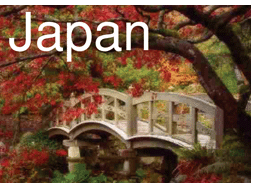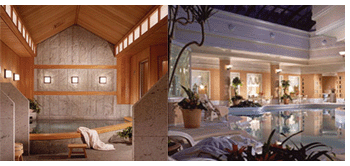|
||||||
| Cambodia, China, India, Indonesia, Japan, Malaysia, Maldives, Thailand, Vietnam, Singapore, Bali Japan • LIFE EXPECTANCY = 80 years average • Healing Traditions of Japan “Onsen” Japanese Healing Traditions • Bathing Rituals - Onsens, Ofuros, Sentos - mineral baths, - “meditation, like the baths, cleanses the soul” - Enzyme Baths - Water Basins - Skin scrubbing • Tea Ceremony - a living tradition • Ikebana (flower arranging) -offerings  The Japanese Bath, delves into the aesthetic of bathing Japanese style and the innate beauty of the steps surrounding the process. The authors explain how to create a Japanese bath in your own home. A Zen meditation, the Japanese bath, indeed, cleanses the soul, and one emerges refreshed, renewed, and serene. HOME - ONSEN - INTRODUCTION & VOCABULARY ONSEN - HOT SPRINGS INTRODUCTION Hot spring bathing is first known to have become popular during the Heian Period more than 1000 years ago. Limited mainly to the aristocrats in the beginning, it spread to the warlords during the Warring States Period (1477- 1568), when it was discovered how effective the springs were in healing battle wounds. With the establishment of peace and stability during the Edo period (1603-1867), the custom of bathing in hot springs was adopted by the hard working farmers. It was the most pleasant and economical way they could relax and recover from the rigors of their lives. Takaragawa Onsen, Gunma Prefecture Onsen had a set back in the form of postwar American Puritanism, whereas many mixed bathing facilities were prohibited. They are still around today, especially in Tohoku (Northern Honshu), but the damage was done, and most onsen you visit will be separated by sex. Hot spring bathing remains an extremely popular custom for people of all walks of life, and the restorative effects of the springs ensure that this delightful custom will continue. The Japanese have made an art out of bathing. There may not be more of a quintessential Japanese experience than sitting outside under the stares with a group of strangers soaking in an onsen (hot spring). Hot spring bathing first became popular in Japan more than 1,000 years ago. It was originally limited to aristocrats, but spread to the warlords when it was discovered how effective the springs were in healing battle wounds. With the establishment of peace and stability during the Edo Period, the custom of bathing in hot springs was adopted by the hard working farmers. It was the most pleasant and economical way they could relax and recover from the rigors of their lives. Japan’s misfortune of sitting atop one of the most thermally active areas of the world does come with an upside: thousands of natural hot springs scattered across the country. Onsens – Outdoor Hot springs Ofuros – Baths designed into the home Sentos – Communal Bath houses  Four Seasons Hotel Chinzan-so, Tokyo © SPA MANAGEMENT JOURNAL - JANUARY 2006 |
||||||